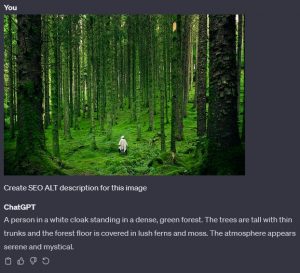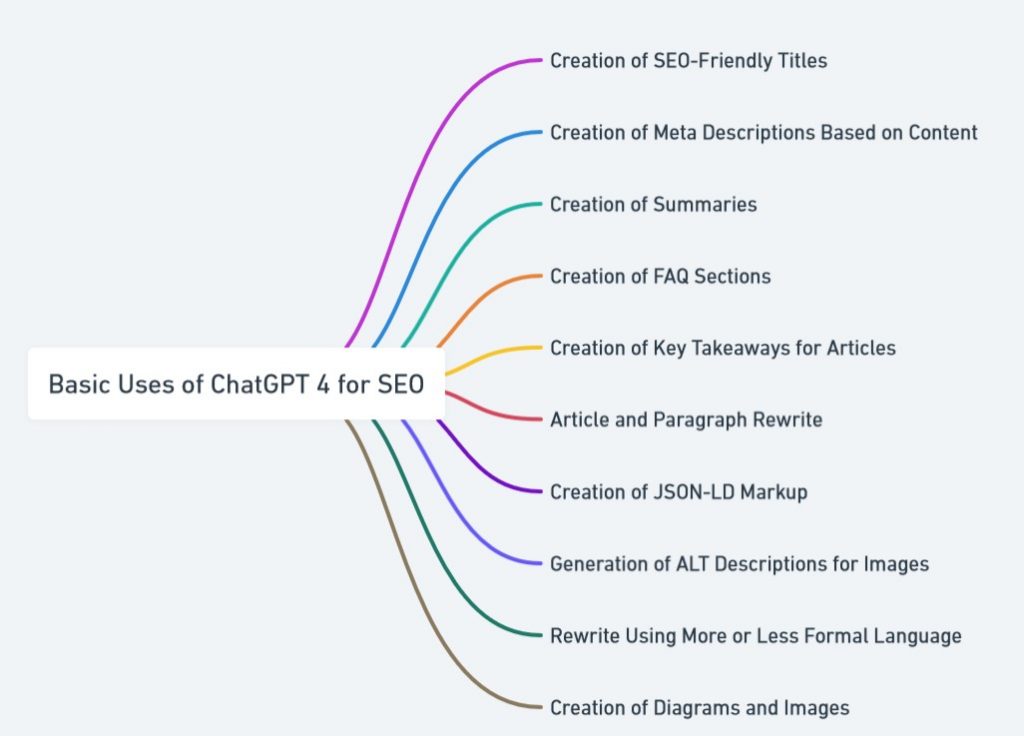Search Engine Optimization (SEO) is an indispensable pillar in the grand temple of digital marketing. Enter the era of AI marvels like ChatGPT, and suddenly, optimizing content for search engines has become as breezy as a walk in the park. Or so some would have you believe. In an amusing twist of over-enthusiasm, a few souls, including some self-proclaimed ‘SEO wizards,’ have elevated AI tools like ChatGPT to the status of a magical wand, capable of granting top SERP rankings with a mere flick. While it’s heartwarming to witness such optimism, reality begs to differ.
ChatGPT is undeniably a game-changer, but it’s no substitute for the savvy and finesse of seasoned SEO professionals. Treating it as an all-conquering hero in the complex saga of SEO is like expecting a charming robot to write a bestselling novel – whimsical, but not quite there yet. In this guide, we’ll navigate the real world of using ChatGPT in SEO, ensuring you wield this ‘not-so-magical’ wand with the skill of a true digital marketing wizard, blending AI efficiency with human ingenuity.
Here’s a guide on how to leverage ChatGPT for SEO purposes:
1. Creation of SEO-Friendly Titles
- How ChatGPT Helps: Generate catchy, keyword-rich titles that grab attention and align with search intent.
(E.g. Propose 10 brief but catchy titles for article below: )
2. Creation of Meta Descriptions Based on Content
- How ChatGPT Helps: Craft concise, informative meta descriptions that summarize page content and include relevant keywords.
(E.g. Propose 10 meta descriptions for article above, each mustb be between 120 and 155 characters maximum.)
3. Creation of Summaries
- How ChatGPT Helps: Produce brief, engaging summaries for articles, blogs, or web pages, highlighting key points and keywords.
(E.g. Create 100 words summary of the article below)
4. Creation of FAQ Sections
- How ChatGPT Helps: Develop comprehensive FAQ sections that answer common queries, incorporating relevant keywords for better search visibility.
(E.g. Create 10 questions FAQ section for article above)
5. Creation of Key Takeaways for Articles
- How ChatGPT Helps: Identify and list the main takeaways from articles, making them easy to scan and understand.
(E.g. Create 3 major takeaways for article below)
6. Article and Paragraph Rewrite
- How ChatGPT Helps: Enhance readability and SEO by rephrasing existing content while maintaining the original context and incorporating SEO strategies.
(E.g. Extend this paragraph by 50 words. OR Rewrite this paragraph to be more simple.)
7. Creation of JSON-LD Markup
- How ChatGPT Helps: Generate structured JSON-LD markup to help search engines understand and index the content better.
(E.g. Create a JSON-LD markup for recipe schema)

8. Generation of ALT Descriptions for Images
- How ChatGPT Helps (GPT-4 Only): Create descriptive ALT texts for images, improving web accessibility and SEO.
(E.g. Create SEO ALT description for this image)

9. Rewrite Using More or Less Formal Language (or change target audience)
- How ChatGPT Helps: Adjust the tone of content to match the target audience’s preference, be it formal or casual, while keeping SEO in mind.
(E.g. Rewrite this paragraph/article to be understandable by the teen)
10. Creation of Diagrams and Images
- How ChatGPT Helps: Generate ideas or descriptions for diagrams and images that can be created to complement the text, enhancing user engagement and SEO.
(Here, you will need to use plugins like AI Diagrams for GPT 4)

Additional GPT Uses for SEO:
- Keyword Research and Analysis: ChatGPT can assist in generating a list of potential keywords and phrases relevant to your content.
You may try providing GPT with your proposed title and article brief, requesting to create a keyword cloud for you. - Competitor Analysis: ChatGPT can help in analyzing competitors’ content strategies and suggest improvements for your SEO. Start with simply analyzing most common keywords in particular article.
- Content Trend Analysis: Get insights on trending topics and questions in your industry to create relevant content. Here, GPT4 uses bing to research trends.
AI the Rule of 30/70 and E-E-A-T Principle:
While ChatGPT is a powerful tool, it’s important to remember the rule of 30/70 in content creation. This means that at least 30% of the work, such as editing and prompting, should be done by a human.
To adhere to the E-E-A-T principle (Expertise, Experience, Authoritativeness, and Trustworthiness), a 50/50 approach is recommended, where half of the effort comes from human input. This ensures the content remains unique, accurate, and reliable, enhancing its SEO value.
Conclusion:
ChatGPT, in all its AI glory, promises to streamline the SEO process as smoothly as a hot knife through butter. But, let’s not get carried away in our digital daydreams. The human touch in this equation isn’t just important; it’s absolutely crucial.
Picture ChatGPT as a high-tech assistant – efficient, yes, but not quite ready to take the reins completely. It’s like having a robot make your coffee; it can do the job, but it lacks the personal touch of a seasoned barista. By marrying the cold, calculating precision of AI with the warm, nuanced understanding of human expertise, we create content that’s not just SEO-friendly but also sparkles with the kind of creativity and engagement that only humans can infuse. This blend leads to a symphony of content that resonates with audiences, rather than just ticking the SEO checkboxes. So, while ChatGPT can be your SEO sous-chef, remember, you’re still the head chef in the kitchen of content creation.
